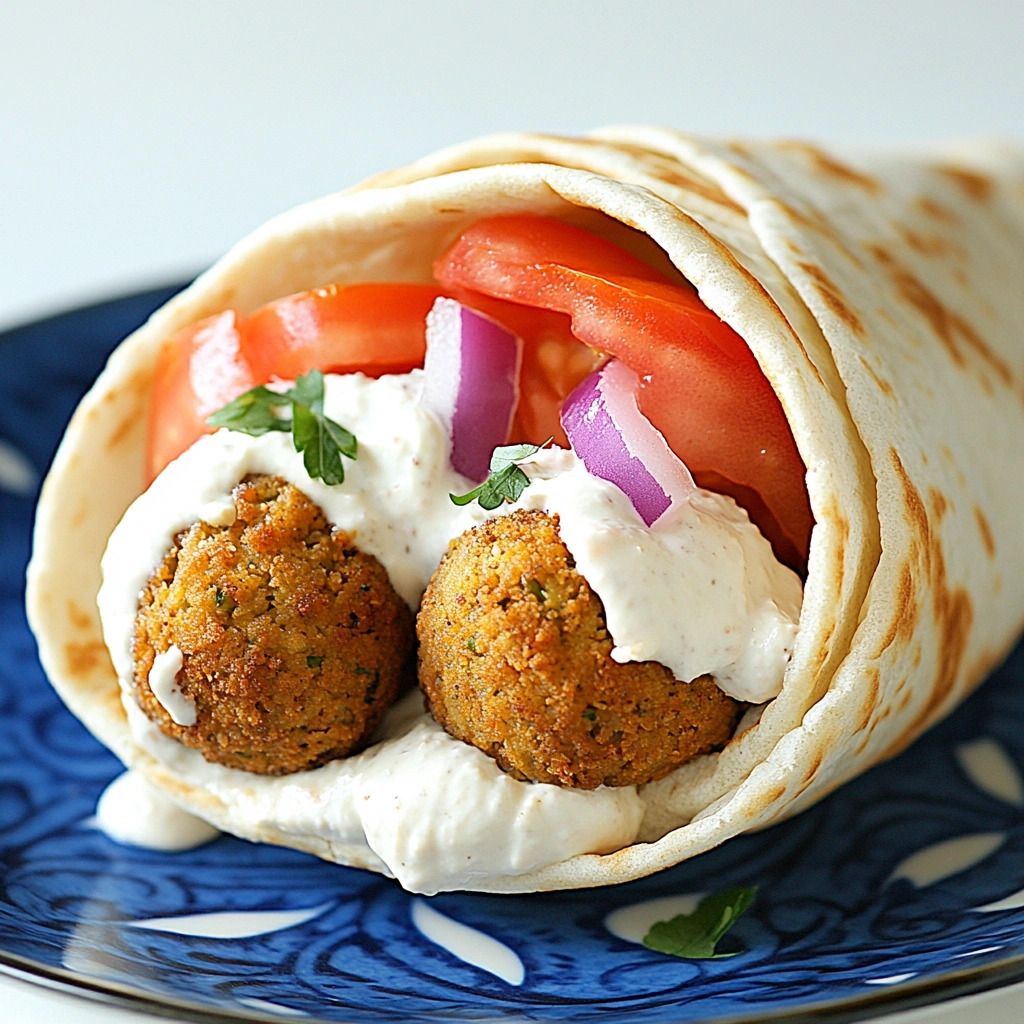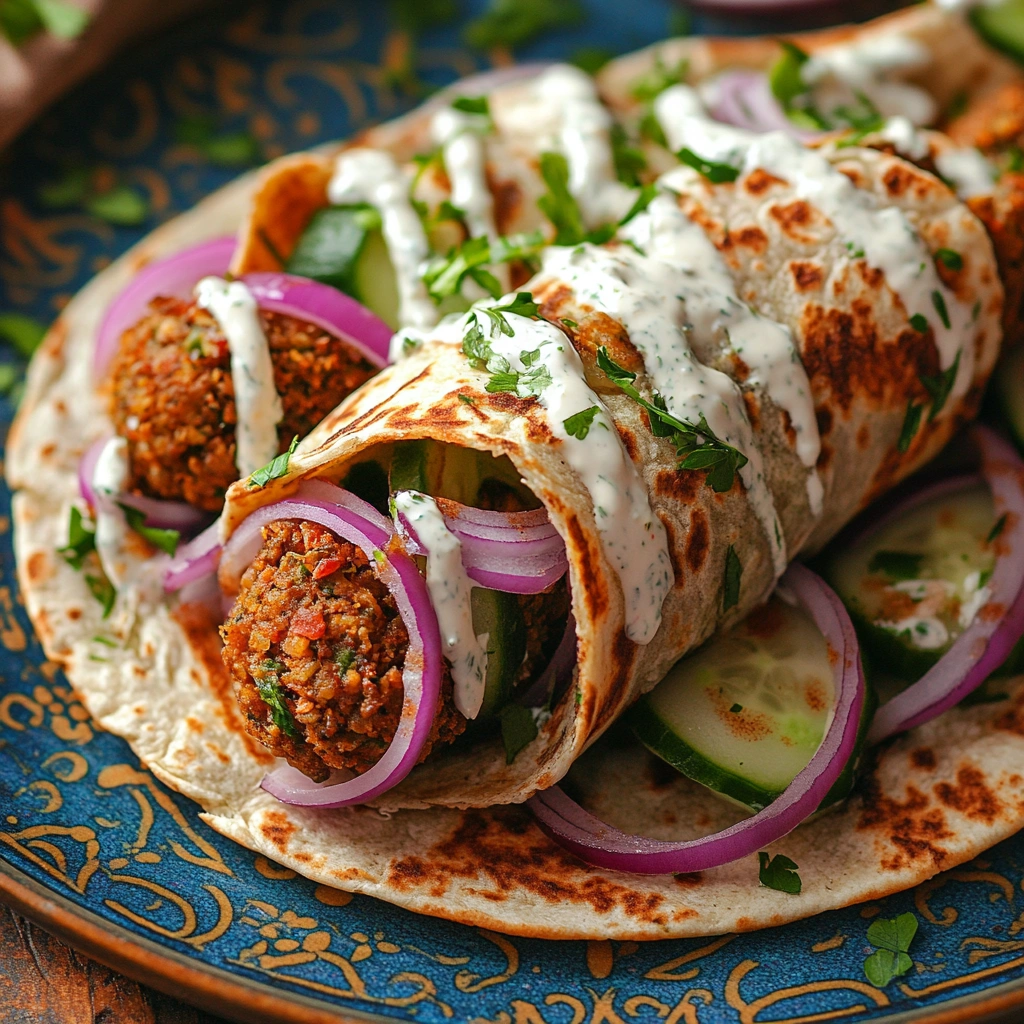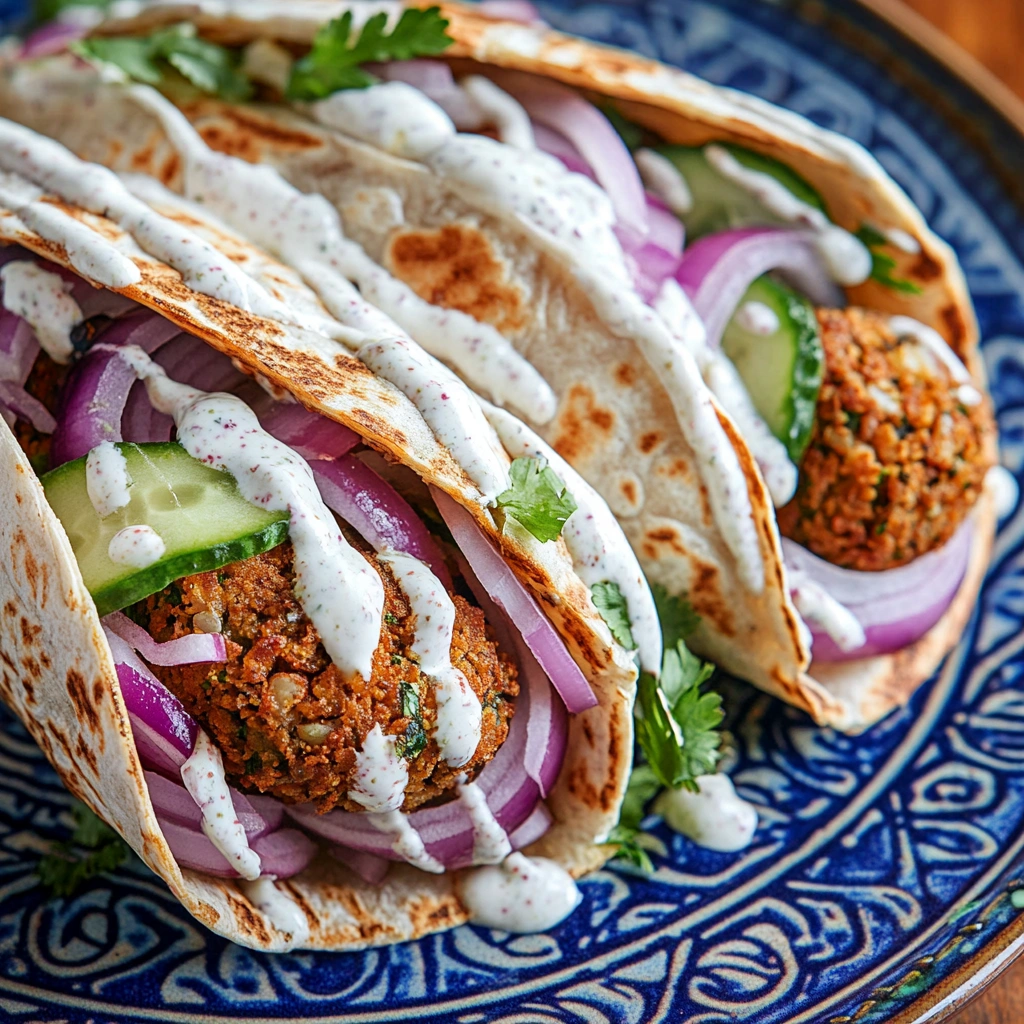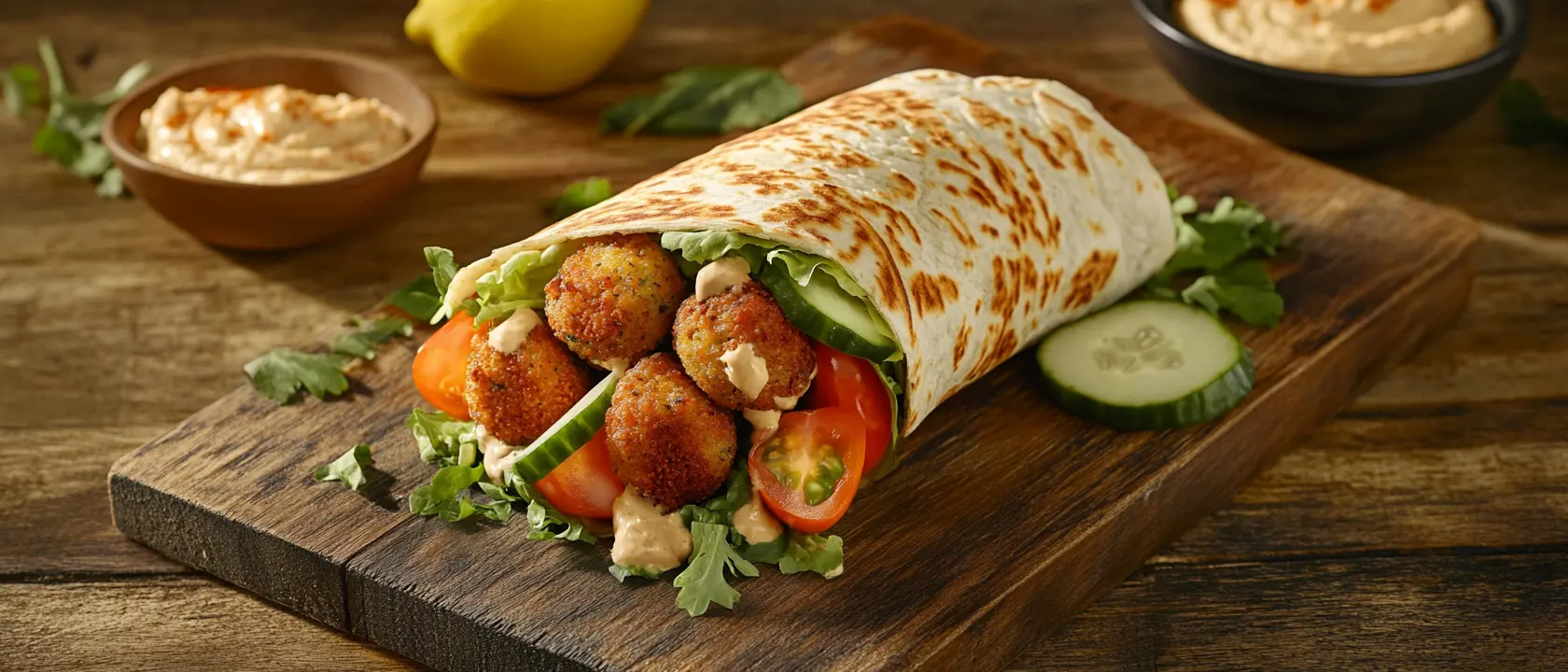Introduction: Why Falafel Wraps Are a Global Favorite
Falafel wraps are a beloved dish around the world, offering a perfect combination of flavor, nutrition, and versatility. Whether you’re a fan of plant-based meals, looking for a quick and satisfying bite, or eager to explore Middle Eastern cuisine, a falafel wrap is an ideal choice.
This guide dives deep into everything you need to know about falafel wraps, including their history, health benefits, how to make them at home, and exciting variations to try. Let’s unwrap the delicious details!
What is a Falafel Wrap Made Of?
A falafel wrap is a flavorful meal that combines crispy falafel balls, fresh vegetables, and creamy sauces, all wrapped in soft bread like pita or tortilla. It’s a portable dish that delivers a delightful mix of textures and tastes.

Key Components of a Perfect Falafel
- Falafel Balls: The star of the wrap, made from chickpeas or fava beans, blended with herbs and spices.
- Fresh Vegetables: Lettuce, tomatoes, cucumbers, and pickles add crunch and freshness.
- Sauces: Tahini or hummus provides a rich, nutty flavor, while garlic yogurt or hot sauce adds variety.
- Soft Bread: Pita bread or tortillas keep everything together and make it easy to eat on the go.
The History of Falafel and Its Evolution Into Wraps
Falafel has ancient origins, believed to have originated in Egypt, where it is called “ta’ameya” and traditionally made with fava beans. Over time, the dish spread across the Middle East, with chickpeas becoming the preferred ingredient in regions like Lebanon and Israel.
The concept of the falafel emerged as a practical and portable way to enjoy this classic dish. Today, it’s a global favorite, found in street food stalls, restaurants, and home kitchens worldwide.
Why Falafel Wraps Are Healthy
Falafel wraps aren’t just delicious—they’re also packed with nutritional benefits, making them a great choice for a balanced diet.

Health Benefits of a Falafel Wrap
- High in Protein:
Chickpeas are a fantastic source of plant-based protein, essential for muscle repair and growth. - Rich in Fiber:
Falafel and fresh vegetables provide dietary fiber, aiding digestion and keeping you full longer. - Low in Saturated Fat:
When baked or air-fried, falafel balls are low in unhealthy fats, supporting heart health. - Loaded with Vitamins and Minerals:
Ingredients like parsley, garlic, and chickpeas offer essential nutrients like vitamin C, iron, and magnesium.
A Healthy Alternative
Opt for whole-grain wraps, add extra veggies, and choose lighter sauces to make your falafel wrap even healthier.
How to Make a Falafel Wrap at Home
Creating your own falafel wrap is simpler than you might think. Here’s a step-by-step guide to making a delicious and healthy version at home.
Ingredients
| Ingredient | Quantity |
|---|---|
| Chickpeas (soaked overnight) | 2 cups |
| Fresh parsley or cilantro | 1 cup |
| Garlic cloves | 4 cloves |
| Onion (chopped) | 1 small |
| Ground cumin | 1 tsp |
| Ground coriander | 1 tsp |
| Baking soda | 1 tsp |
| Salt and pepper | To taste |
| Olive oil | For frying |
| Pita bread or tortilla | 4 pieces |
| Fresh vegetables (lettuce, tomato, cucumber) | As needed |
| Tahini or hummus | 1/2 cup |

Step-by-Step Instructions
- Prepare the Falafel Mixture:
- Blend chickpeas, parsley, garlic, onion, cumin, and coriander in a food processor until coarse.
- Add baking soda, salt, and pepper, mixing until well combined.
- Shape and Cook:
- Form the mixture into small balls or patties.
- Fry in hot olive oil until golden brown, or bake at 375°F (190°C) for 20-25 minutes, flipping halfway.
- Assemble the Wrap:
- Warm your pita bread or tortilla.
- Spread a layer of tahini or hummus.
- Add fresh vegetables like lettuce, tomatoes, and cucumbers.
- Place 3-4 falafel balls inside and drizzle with extra sauce.
- Wrap It Up:
- Fold the sides inward and roll tightly. Slice in half and serve.
Popular Variations of Falafel Wraps
Falafel wraps are incredibly versatile, allowing you to customize them to suit your preferences. Here are some popular variations:
1. Mediterranean Falafel
- Add feta cheese, olives, and tzatziki sauce for a Greek-inspired twist.
2. Spicy Falafel Wrap
- Include jalapeños, harissa, or hot chili sauce for a fiery flavor.

3. Vegan Power Wrap
- Load up on shredded carrots, red cabbage, and avocado slices for a nutrient-packed version.
4. Gluten-Free Falafel
- Swap pita bread for lettuce leaves or gluten-free tortillas.
Common Questions About Falafel
1. What is falafel made of?
A falafel wrap combines crispy falafel balls, fresh vegetables, and creamy sauces like tahini or hummus, all wrapped in soft bread.
2. Is a falafel wrap healthy?
Yes, falafel are high in protein, fiber, and essential nutrients. Opt for baked falafel and whole-grain for even more health benefits.
3. What do falafel balls taste like?
Falafel balls are savory, nutty, and aromatic, with a crispy exterior and soft interior.
4. Why might falafel not be vegan?
While falafel is vegan, some variations may include dairy-based sauces or be fried in shared oil with non-vegan foods.

Falafel Wraps Across Cultures
Egypt: Ta’ameya
- Made with fava beans, Egyptian falafel is greener and softer inside due to the heavy use of fresh herbs.
Lebanon: Chickpea Falafel
- Lebanese falafel uses chickpeas as the main ingredient, resulting in a nuttier, denser texture.
Western Variations
- Western adaptations often feature creative toppings like avocado, roasted veggies, or spicy aioli.
Conclusion: Why You Should Try a Falafel
Falafel wraps are more than just a meal—they’re an experience. With their rich history, health benefits, and endless customization options, they’re a dish that everyone can enjoy. Whether you’re preparing them at home or enjoying them at a local eatery, falafel wraps are guaranteed to satisfy.
So, gather your ingredients, follow the recipe, and experiment with variations to create your perfect falafel wrap. It’s time to wrap up your cravings in the best way possible!
Call to Action: Share Your Falafel Experience
Do you love falafel? Share your favorite recipe variations or post photos of your creations on social media. Don’t forget to bookmark this guide for future reference and spread the falafel love! spread the falafel love!


1 thought on “The Ultimate Guide to Falafel Wraps: History, Health, and How to Make Them”